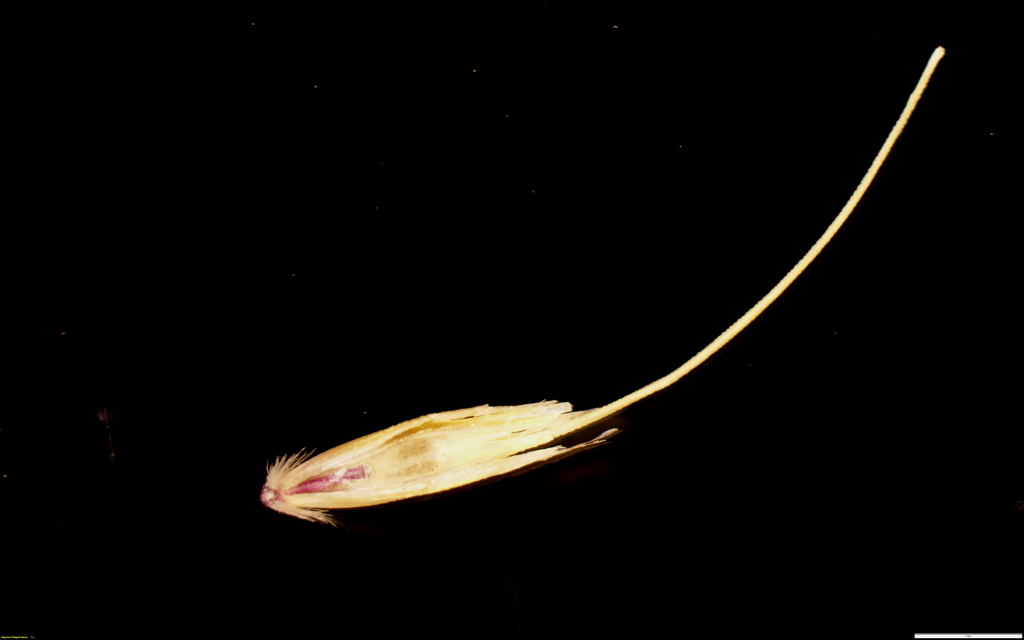Amphibromus sinuatus
S.W.L.Jacobs & LapinpuroStoloniferous aquatic perennial; culms decumbent, often only the inflorescence emergent, to 120 cm high overall. Leaves glabrous, scabrous; blade flat, to 17 cm long and 1–4 mm wide; ligule acute, 5–11 mm long. Inflorescence a slender, rather sparse panicle, to 25 cm long. Spikelets 4–6-flowered, 12–19 mm long (excluding awns), green or faintly tinged purple; glumes obtuse to acute, the lower 1–3-nerved, 3–4.5 mm long, the upper 3–5-nerved, 4–6 mm long; lemma 6–8.2 mm long, scabrous along nerves in upper part, otherwise mostly smooth, apical teeth 2 or 4, the outer pair smaller and lower when present, the inner pair 0.3–1 mm long; awn 14–26 mm long, inserted 35–50% of the lemma length from the apex, column and bristle not distinguished; palea slightly shorter than lemma. Flowers Oct.–Mar.
GleP, VVP, GipP, OtP, WaP, DunT, EGU, HNF, MonT. Also NSW. Rare and apparently confined to permanent swamps in cool, sometimes elevated sites, and disjunctly distributed (e.g. near Casterton, Warrnambool, Phillip Island, Wonthaggi, Bairnsdale, Suggan Buggan and Bendoc).
Walsh, N.G. (1994). Poaceae. In: Walsh, N.G.; Entwisle, T.J., Flora of Victoria Vol. 2, Ferns and Allied Plants, Conifers and Monocotyledons, pp. 356–627. Inkata Press, Melbourne.
 Spinning
Spinning


